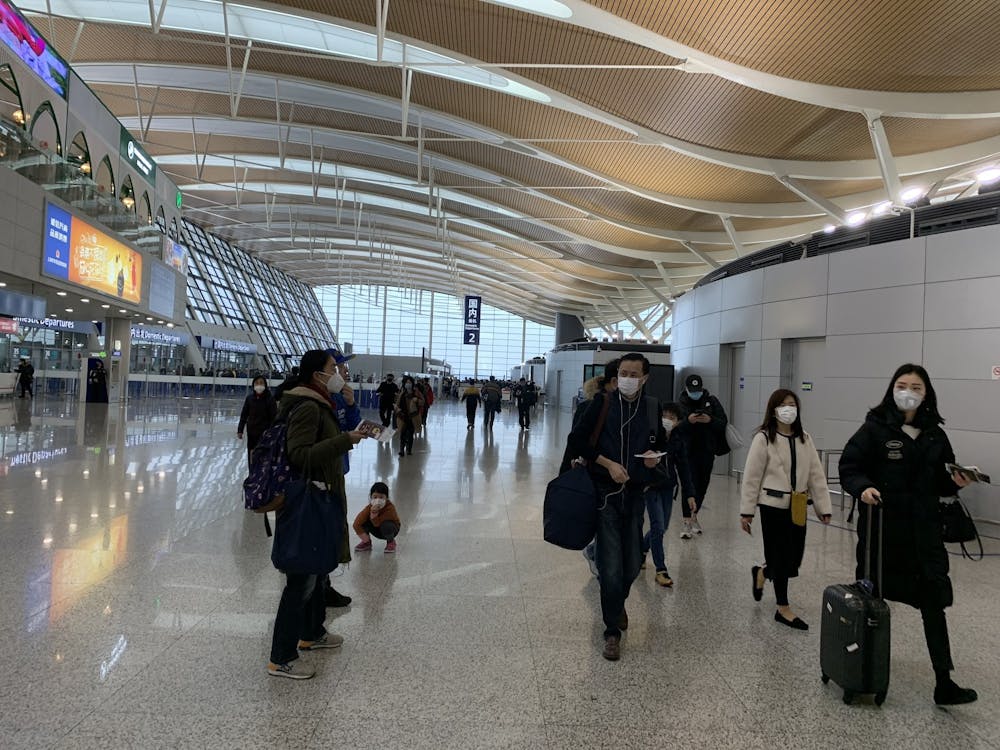
During the first week of January when I was spending my winter break in China, I received a link from my uncle on WeChat. I opened it, and it was about a new viral pneumonia spreading in Wuhan, China.
I closed it, thinking it was just another exaggerating article that was trying to get more likes, and completely forgot about it. However, no more than two weeks later, I realized just how wrong I was.
This newly spreading viral pneumonia is named the 2019 novel coronavirus (2019-nCoV). On Jan. 30, the World Health Organization (WHO) has declared the 2019-nCoV a Public Health Emergency of International Concern (PHETIC). So what exactly is this virus, and how did it start?
The story goes back to early December of 2019 in Wuhan, China, at a place called the Wuhan seafood market. The market occupies up to 540,000 square feet of land, which is about seven soccer fields.
It has become the biggest seafood wholesale market in Central China. What fills the market is not only normal seafood, but also illegal wildlife (yewei), ranging from deer to civets and bats, which are the sources for other pandemic outbreaks, such as SARS, Black Death and possibly Ebola.
Although no specific source has been confirmed for the 2019-nCoV, it is suspected that the outbreak is from consumption of bats.
The news about the novel coronavirus had reached all of China by mid-January.
The gruesome memory of the 2003 outbreak of SARS-CoV (severe acute respiratory syndrome coronavirus) still lingers in people’s minds. With the emergence of a new epidemic, people started to panic.
Wuhan, with a population over 11 million, is a political, economic, financial, commercial, cultural and educational center in Central China.
With people flooding out of Wuhan for the Chinese New Year, the disease started to spread across the entire country rapidly.
In the meantime, scientists are figuring out what exactly this virus is and how it relates to the most recent outbreak of SARS-CoV. 2019-nCoV belongs to the general category of coronavirus.
Just as its name indicated, coronaviral particles are covered with corona, or crowns, of sugary proteins that project from the outer surface. Coronavirus is a family of RNA viruses that typically induce mild respiratory diseases.
However, in cases such as SARS-CoV and 2019-nCoV, the viruses can cause severe outbreaks in the human population, resulting in critical illness and even deaths.
Similar to the other coronavirus species, 2019-nCoV is spread through droplets. Therefore, masks are a good protective gear against the viral particles floating in the air.
One specific characteristic of 2019-nCoV is its long dormant period, from three to 14 days.
Due to a longer incubation time, it is easier for infected individuals to go undetected until they have already passed the illness on to others.
Furthermore, RNA viruses tend to be more dangerous and unpredictable due to its ability to mutate much more often than the DNA viruses.
Contrary to many people’s beliefs, 2019-nCoV is not the same species as SARS-CoV.
According to a summary of nCoV Genetics by the Bloomberg School of Public Health, the 2019-nCoV is merely related to the 2003 SARS-CoV, as they both share some sequence homology, and is likely originated from a bat coronavirus.
Many people have compared coronavirus to influenza, or the common flu. Although they share an array of similarities, such as being RNA viruses and causing similar symptoms, there are still substantial differences existing between this specific novel coronavirus and influenza that makes the 2019-nCoV a PHETIC and not an influenza.
According to the World Economic Forum, 2019-nCoV has a higher case-fatality ratio: three percent compared to 0.05 percent for influenza.
It also has a higher reproduction number, meaning that infected patients could pass the illness to more people on average. Another major difference is the existence of vaccination for influenza.
The spread of the disease took less than two months. On Jan. 23, the city of Wuhan and the Hubei province governments finally took action and quarantined the entire city by suspending all public transportation and major highways.
After that, other severely infected cities in Hubei province were locked down. However, as people travel across the country to go home for the Chinese New Year, the disease continued to spread.
According to DXY.cn (dingxiangyuan), on Jan 30, there were 7,711 confirmed cases, 12,167 suspected cases and 170 deaths. As of Feb. 5, there are 14,489 confirmed cases, 19,544 suspected cases and 304 deaths.
As the disease spread, the entire country started to panic. Everything that has anything remotely to do with protection from the coronavirus is completely sold out on the market. Currently, the best way to stay safe outside is to wear masks in order to prevent viral particles lodging onto the nasal and mouth cavities.
Even though China is the biggest supplier of masks and other protective gears such as goggles and protective suits, the massive supply still does not meet the increasing demand. Fewer people are venturing outside — the bustling streets of Shanghai have now become almost ghost-like.
A gloomy cloud is cast over China, and everyone is doing all they can to stay safe. I left China on Jan. 24. In the airport, on the 12-hour flight and even in the bathrooms, everybody wore a mask.
The fear and tension were clearly visible in people’s faces.
As confirmed cases and deaths go up each day, we can only pray for the cornonavirus outbreak to end, for the country to endure this disease and for the people to overcome in the face of this new epidemic.
I would like to use this opportunity to remind everyone to not blame China or its people for the emergence and spread of 2019-nCoV. We are victims of this dreadful disease as well, and we cannot control the spreading, as much as we would like to.
Please refrain from calling the 2019-nCoV the Wuhan-virus or the China-virus.
We can only hope to get through it together.





